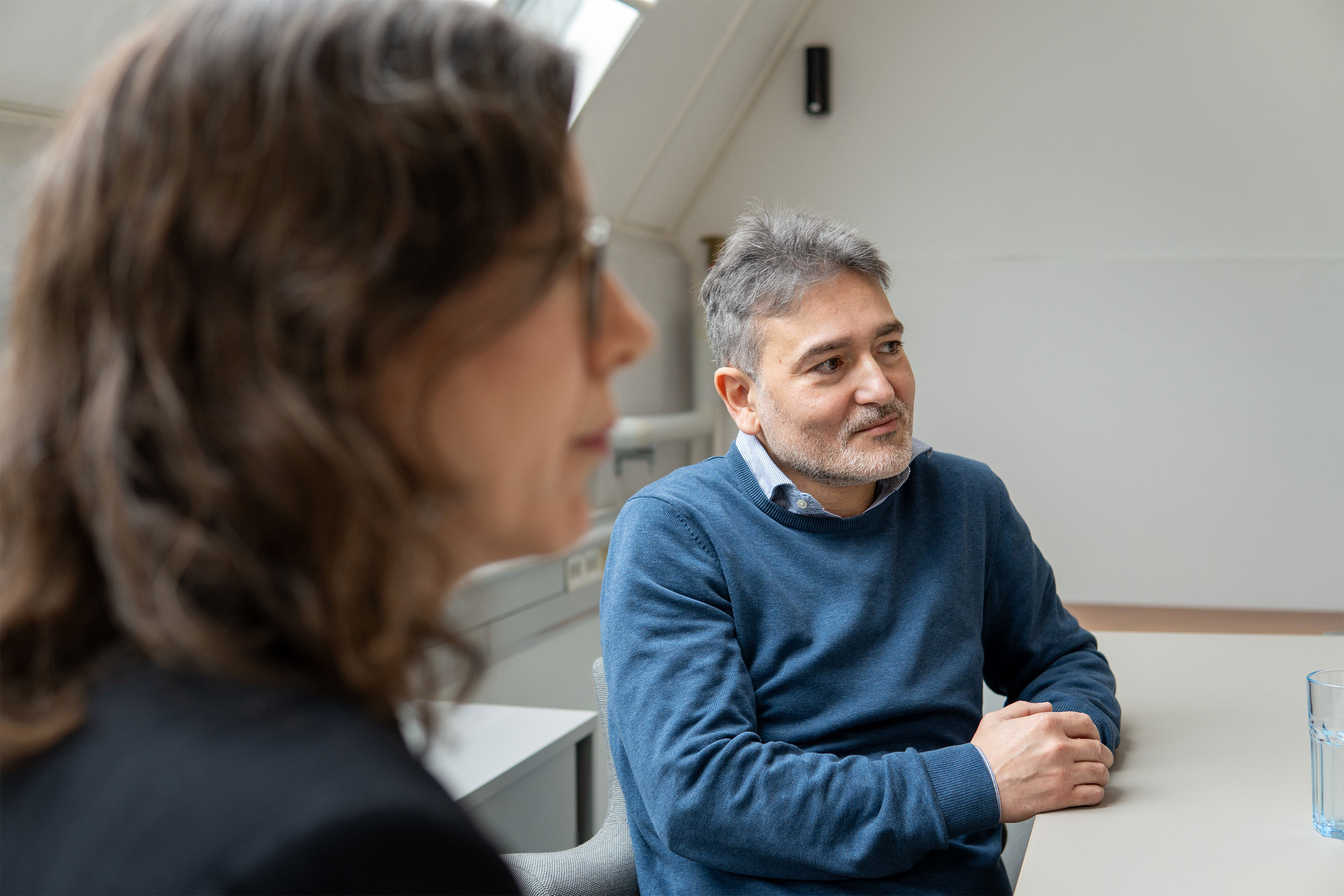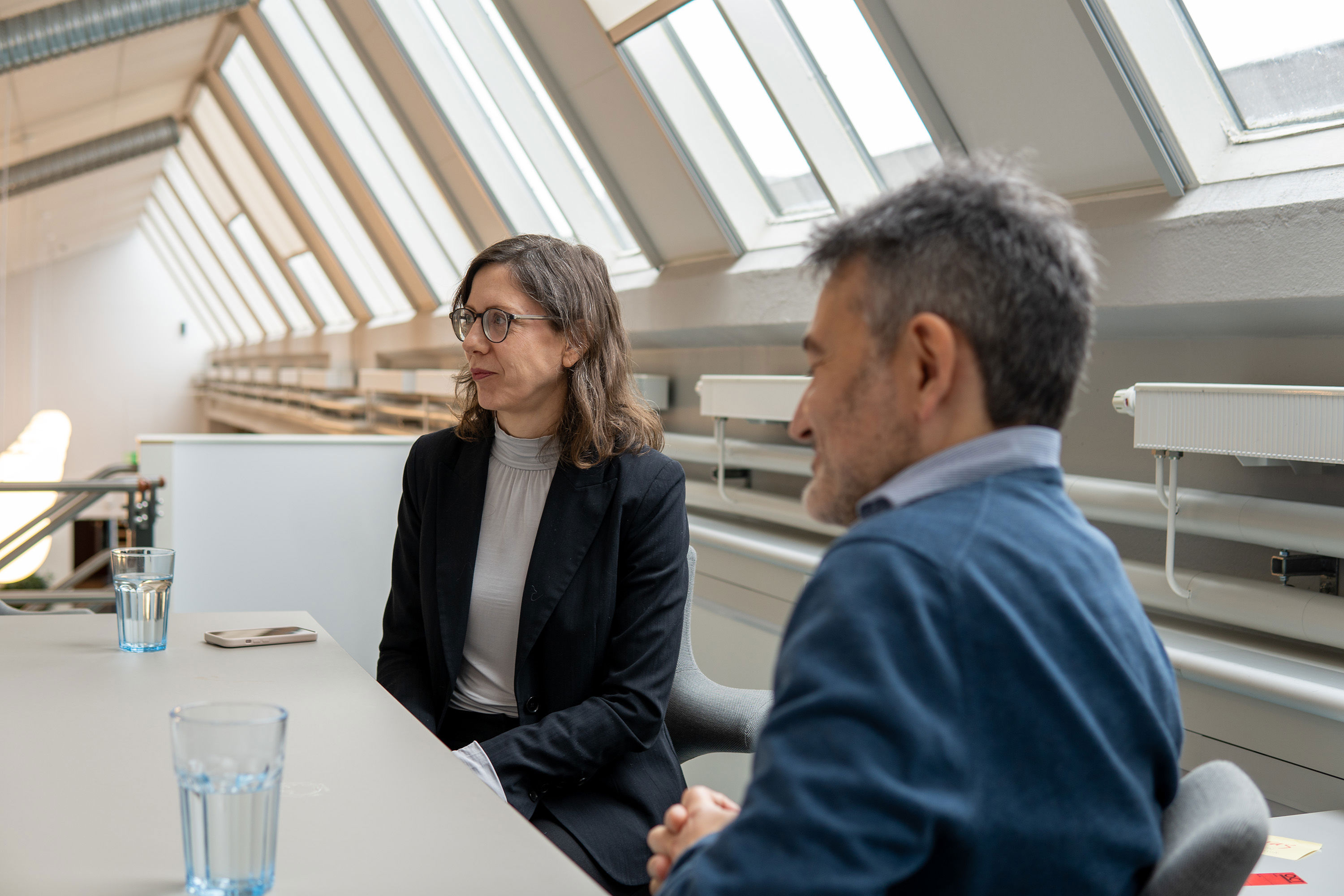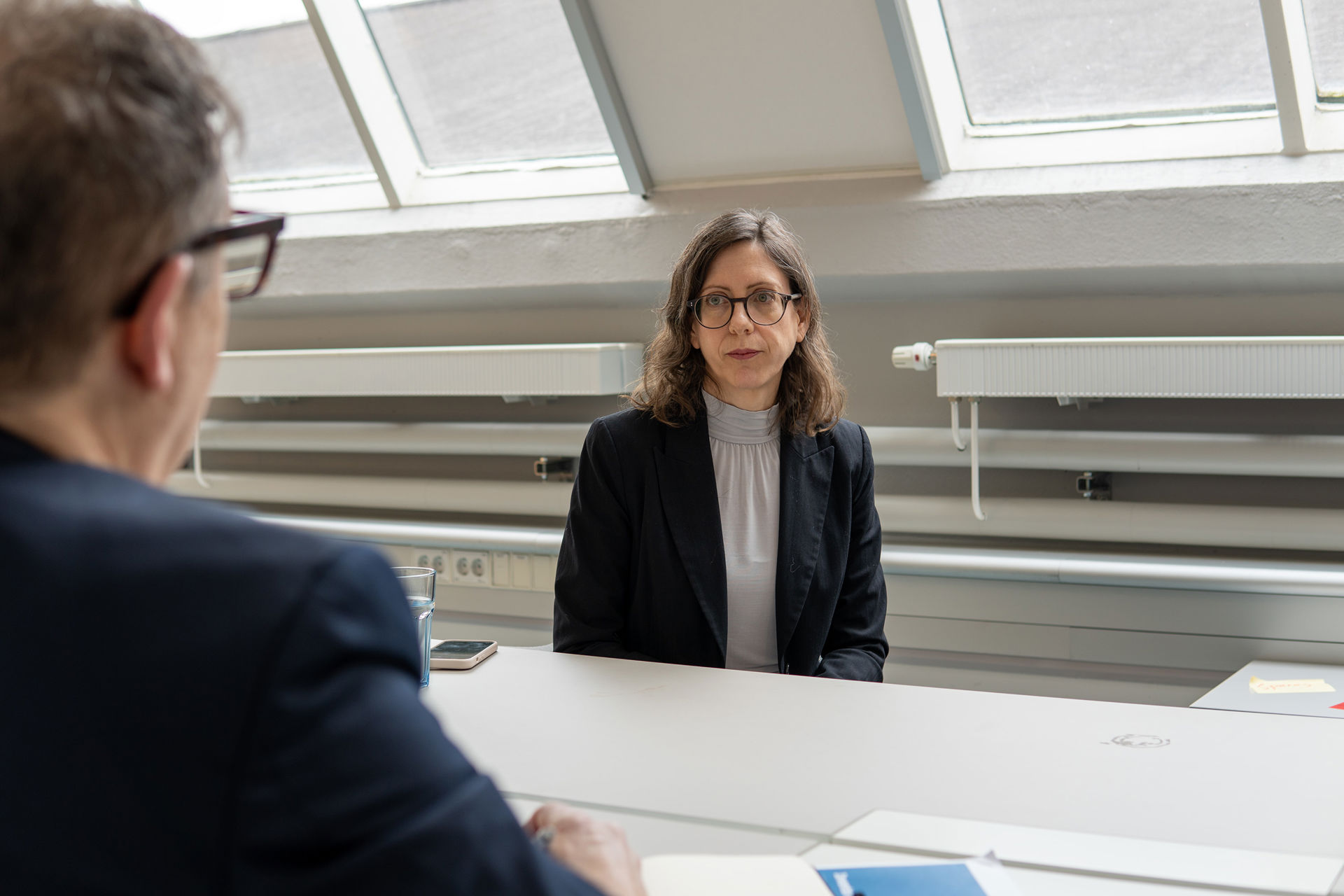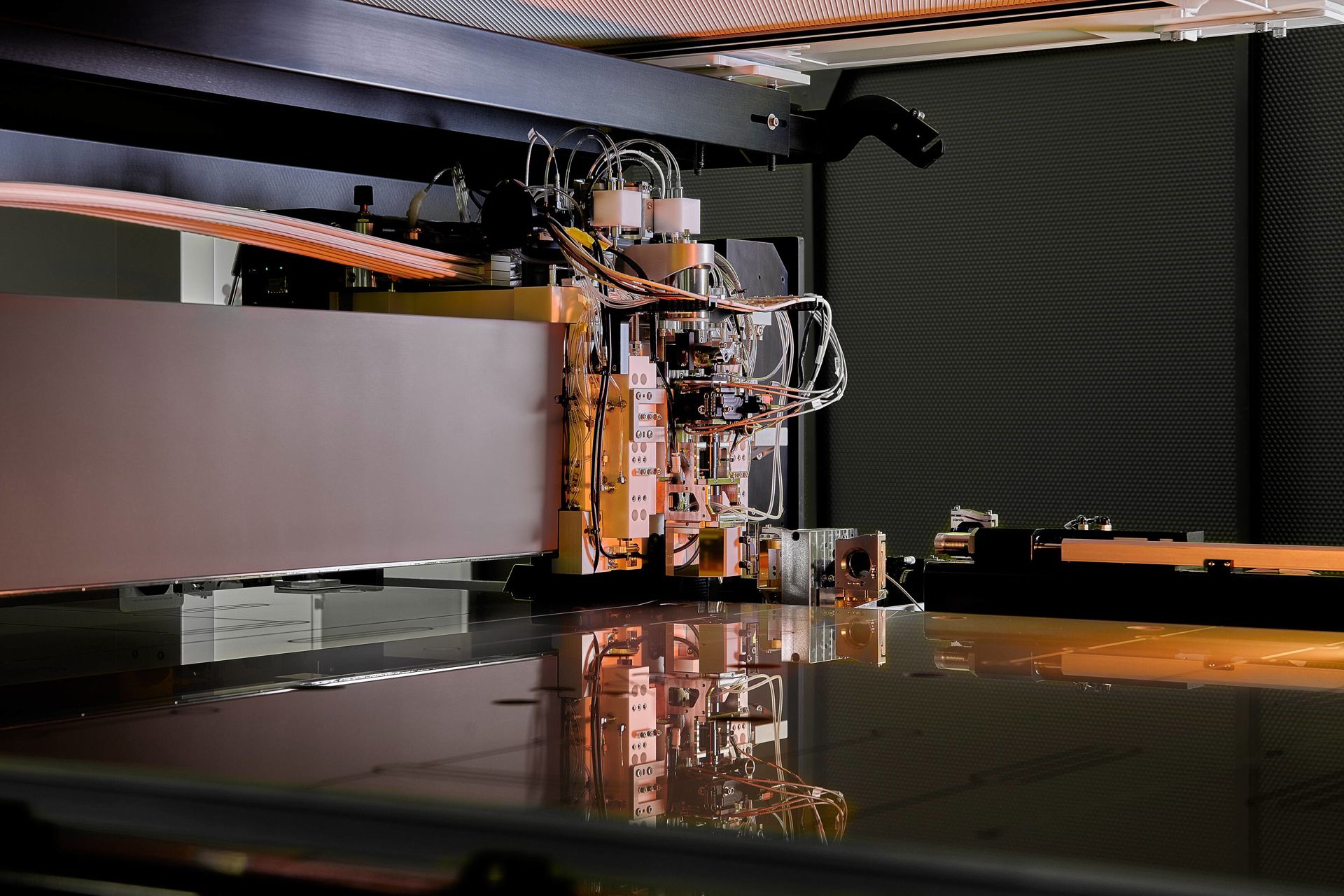Protecting ideas that matter
First-ever Mycronic Inventor Award goes to Pattern Generators Core Research TeamLasers make Nur Ismail eyes light up with excitement. Mention “acusto-optic modulators” and the soft-spoken PhD leans in with a smile. For years, he has worked behind the scenes on specialized R&D projects critical to refining the exceptional precision and quality of Mycronic pattern generators. Now Nur and his team are being honored with the first-ever Mycronic Inventor Award.

“I was completely surprised and thrilled when we got the call about the award,” says Nur, emphasizing that it was a team effort. Other winners from the Pattern Generators Core R&D Team include Anders Svensson, Andrzej Karawajczyk and Pontus Stenström.
“It’s like noise-cancellation headphones.”
Nur Ismail, Senior Specialist, PG Core Tech Innovation
Canceling electrical crosstalk
In this case the award recognized an innovative method for canceling electrical crosstalk, a type of interference in the acousto-optic modulators used for lithography. Eliminating crosstalk is essential to ensuring high signal quality and performance – a critical requirement for producing advanced flat-screen TVs, semiconductors and more. Nur simplifies it: “It’s like noise-canceling headphones blocking unwanted sounds – except we’re working with ultrasonic waves in light beams.”
He adds: “The award is a great motivator for everyone in R&D, especially since many are extremely busy and need to dedicate extra time and energy to do this.”

This is exactly the response that IP Manager Sara Karlgren hoped for. She wants her colleagues to recognize the importance of inventions and assure them that she is right at their side, supporting them throughout the application process. “The best patents protect smart, elegant solutions that address our customers’ problems.”
“The best patents protect smart, elegant
solutions that address our customers’ problems."
Sara Karlgren, IP Manager, Mycronic
Elevating the value of innovation
In 2024, Sara spearheaded the introduction of this new award to encourage innovation across the company. Now, every year, a nomination committee, composed of R&D managers from the four divisions, will select a patent application based on several criteria. These include product exclusivity,, revenue potential, competitive advantages or sustainability impact.

“Innovation is the heart of Mycronic,” observes Sara. “We saw the award as a great way to highlight the importance of innovative ideas.” With a PhD in microbiology from University of Gothenburg, she has a deep appreciation for research but developed an even stronger passion for scientific writing. An article in Nature, the prestigious scientific journal, about patents sparked her interest and transition into intellectual property.
Soon she took on roles in patent drafting and prosecution at Zacco, and at Zacco, one of Europe’s leading patent and trademark protection agencies, and later patent handling at Volvo Construction Equipment, part of the Volvo Group in Eskilstuna, Sweden where she was Global Head of IP Strategy and Portfolio. Nearly five years ago, with loads of relevant background, she joined Mycronic as the IP Manager.

Sara's top 5 things you didn't know about patents
1. Patents are territorial
A patent only protects an invention in the country or region where it’s granted.
2. You can file a patent before building anything
You don’t need a working prototype – just a detailed enough description that someone skilled in the field could make it.
3. Patents have a time limit
Most expire after 20 years, at which point the invention enters the public domain.
4. Not everything is patentable
Abstract ideas, obvious tweaks with no “creative height” and certain medical treatments methods can't be patented.
5. A patent doesn’t guarantee use
You may still need a license if your invention builds on an existing patent.
Building a strong IP portfolio
“Our mission in securing patents is to build a strong IP portfolio and maintain a competitive edge by protecting these valuable assets,” says Sara. “Intellectual property is the backbone of innovation.” She notes that Mycronic invests substantially in R&D – 11 percent of its revenue in 2024 –directed towards the high-value capital equipment required for electronics manufacturing.
“Intellectual property is the backbone of innovation.”
Sara Karlgren, IP Manager, Mycronic
23.8 percent more profitable
Does investing in IP patents pay off? Research suggests that it does. A 2025 study by the European Union Intellectual Patent Office (EUIPO) found that firms holding Intellectual Property Rights (IRPs) generate 23.8 percent more revenue per employee than firms that do not. Reflecting this trend, Mycronic’s solid financial foundation is exceptionally strong, providing the flexibility to invest in R&D.
This is good news for researchers like Nur Ismail, who, in some cases, have dedicated much of their professional careers to securing research funding in pursuit of their passion. Born in Palermo, Sicily to an Italian-Palestinian family, Nur studied electrical engineering at the University of Palermo. However, he soon realized his desire to move to Rome to further his studies and work as a programmer.
Integrated optics – what is it and why does it matter?
During his research journey, he developed a strong interest in integrated optics, a field dedicated to developing and miniaturizing optical devices and systems on a single chip. He explains that this process is similar to how microelectronics, such as semiconductors, are integrated into electronic components. Integrated optics also plays a crucial role in advancing optical solutions, enabling faster and more efficient photonic systems that drive innovation across various industries.
After Rome, Nur moved to the Netherlands, earning a PhD in integrated optics at the University of Twente, followed by post-doctoral research. When his advisor and team relocated to KTH Royal Institute of Technology in Stockholm, he followed along, leading to connections at Mycronic. There, a shared passion for optical engineering made him feel right at home in their multi-cultural team. What began as a temporary position has now become an eight-year journey.
“Working in Mycronic R&D is a dream job for an engineer”
Nur Ismail, Senior Specialist, PG Core Tech Innovation
Tracking 29 light beams simultaneously
“Working in Mycronic R&D is a dream job for an engineer,” says Nur, who divides his time between his desk and the optical laboratory. Using mirrors, lasers and ultrasound, he visualizes and analyses small disturbances in beam movement, observing up to 29 beams simultaneously. “By controlling the beams, we ensure each one hits the plate precisely without any crosstalk affecting the others.”
Sun, wind and sky
On a personal note, Nur greatly enjoys working with his multicultural R&D colleagues from Sweden, Iran, India, Poland and China, among other countries. “It’s a great bunch of people.” He has also taken up sailing and skiing: “I love the sun, wind and sky” – a refreshing contrast to research. In addition, he found great fulfillment in mentoring students through the Tekniksprånget project, an internship program open to high school graduates under 21 and organized by the Royal Swedish Academy of Engineering Sciences (IVA).
At Mycronic, innovation is not just about breakthroughs in technology – it’s about working together to bring electronics to life. By fostering new ideas and pushing the boundaries of what’s possible, we continue to develop solutions that benefit both our customers and the industry as a whole.
Text: David Gray

Basic steps to patent application
1) Research – Check if your invention is novel by going through existing databases.
2) Prepare – Write a detailed description, claims and drawings of your invention.
3) File – Submit a patent application (provisional or non-provisional) to patent office.
4) Examination – The patent office reviews your application for novelty and eligibility.
5) Grant – If approved, you receive patent rights, typically lasting 20 years.
IN THE NEWS
Sara Karlgren, IP Manager at Mycronic
Nur Ismail, Senior Specialist, PG Core Tech Innovation
Anders Svensson, Senior Specialist, PG Core
Andrzej Karawajczyk, Senior Specialist, PG Core
Pontus Stenström, FPGA & System Design
FACTS ABOUT MYCRONIC IP
| IP Manager: | Sara Karlgren |
| Award: | Mycronic Inventor Award, established 2024 |
| Patents: | More than 400 |
| Focus: | US, China, South Korea, Europe |
| Sectors: | PCB assembly, photomask equipment, dispensing & coating, bare board testing, die bonding |
For more key facts on Mycronic, click here https://www.mycronic.com/about-us/key-facts
